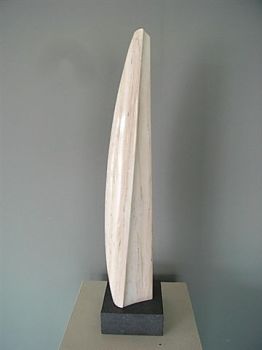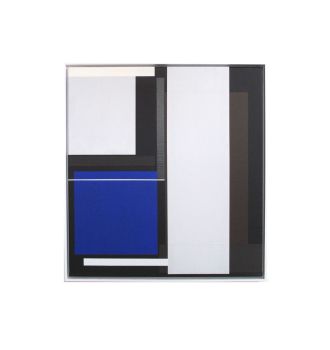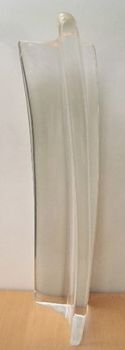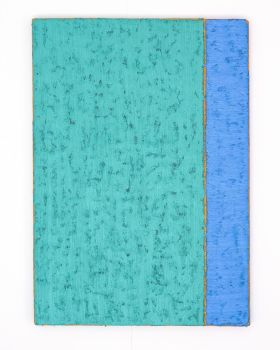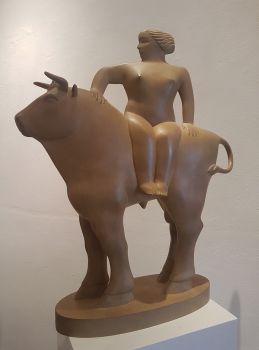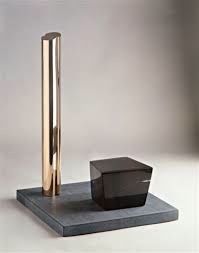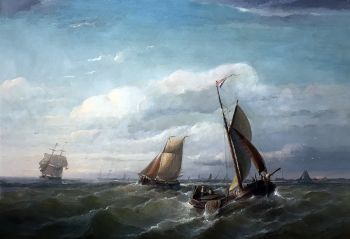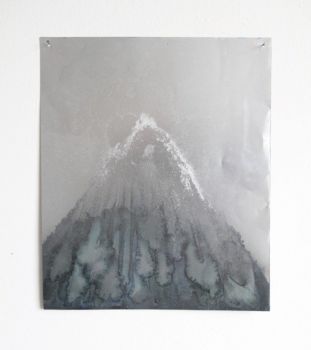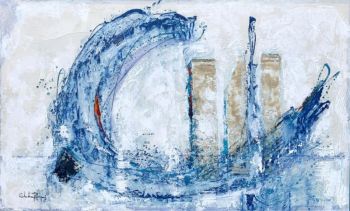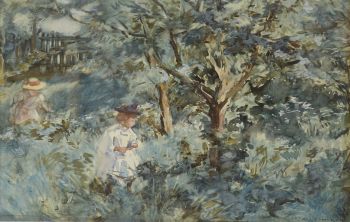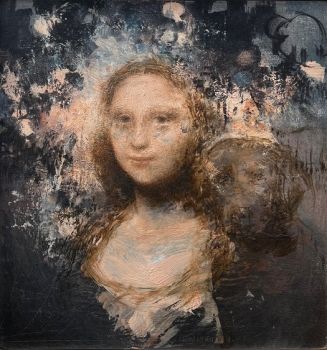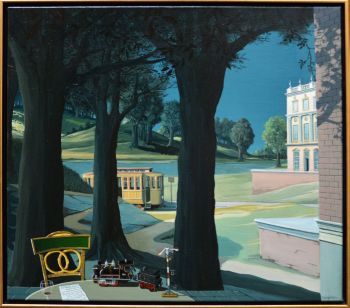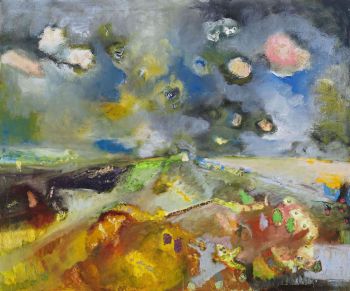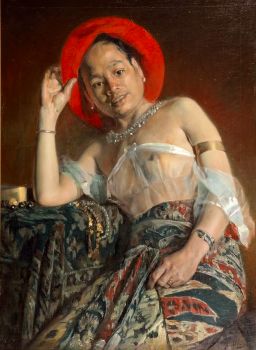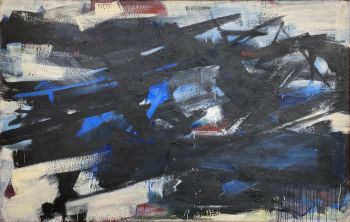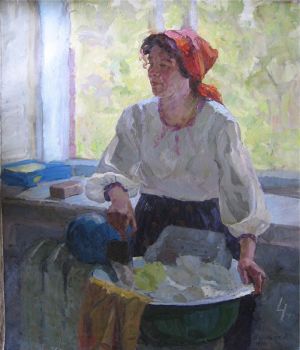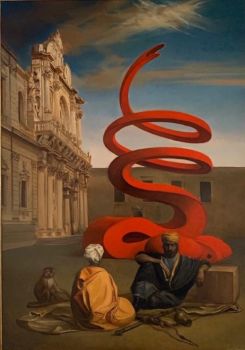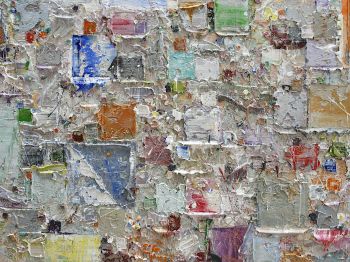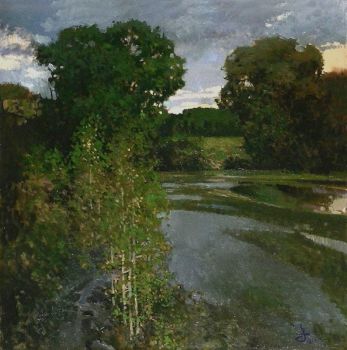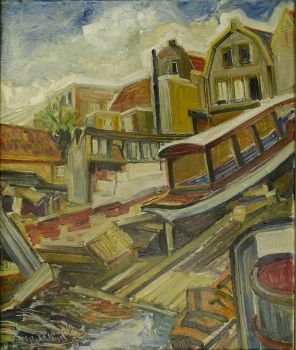Mid-Century Modern Dutch Oil Painting "Composition in White, Black and Blue" 1961
Georg Ruyter
Original oil on canvas
70 ⨯ 60 ⨯ 2 cm
ConditionMint
€ 2.000 - 3.000
The Millen House
- About the artworkThis rare and significant work by George Ruyter captures his journey through various phases of modern art. Ruyter’s career from 1928 to 1960 encompassed figurative work, including drawings, wall paintings, frescoes, and mosaics. In 1941, he joined the Vereeniging Sint Lucas in Amsterdam, and in 1943, he became a member of the Amsterdam Independents. Post-1945, Ruyter began exploring geometric abstraction, and by 1968, his style evolved into Concrete art. In 1974, Museum Fodor in Amsterdam dedicated an exhibition to his work, underscoring his influence in the art world. Reflecting on his process in the *Catalog Fodor 20*, Ruyter wrote: “In general, I work with two opposing elements, which together form a totality that is both static and dynamic. I call it concrete design, something that asserts itself and is based on the properties of the surface and the material to be used. From this also follows the color scheme for each painting.” This approach is evident in his compositions, where structure, material, and color coalesce into unified yet dynamic visual statements.
- About the artist
Georg Ruyter (1913–1982) was a prominent Amsterdam-based painter and graphic artist whose career reflected a deep engagement with evolving artistic styles, from figurative and geometric abstraction to the concrete art movement. Born and raised in Amsterdam, Ruyter embarked on his artistic journey in 1928 when he began training as a drawing teacher. From 1933 to 1937, he refined his craft at the Rijksakademie van Beeldende Kunsten in Amsterdam, where he received formal education in painting.
Following the completion of his studies, Ruyter spent five formative years living in Haarlem and the Frisian town of Sloten. This period allowed him to immerse himself in the serene landscapes and quietude that often influenced his artistic themes. He eventually returned to Amsterdam, where he spent the remainder of his life, solidifying his place within the city’s vibrant artistic community.
Ruyter’s artistic repertoire included landscapes, still lifes, and portraits, showcasing his versatility and technical skill. His early work adhered to a figurative style, occasionally incorporating elements of geometric abstraction. However, after 1958, his style evolved significantly, moving toward concrete art—a form of abstraction characterized by its focus on pure form and color, independent of external references.
As an active member of De Onafhankelijken (The Independents) and the St. Lucas artists' association, Ruyter was deeply involved in the Dutch art scene, contributing to exhibitions and artistic discourse. His work explored the interplay of opposing elements, which he described as forming a "totality that is both static and dynamic." He referred to his approach as konkrete vormgeving (concrete design), emphasizing the inherent properties of the surface and materials he employed.
Ruyter’s philosophy and artistic methodology underscored his commitment to creating works that were self-referential, existing purely as expressions of form and material. His unique approach positioned him as a key figure in mid-20th-century Dutch art, bridging traditional and modernist tendencies.
Today, Georg Ruyter is remembered for his intellectual approach to art and his ability to seamlessly integrate contrasting elements into cohesive compositions. His legacy endures in the appreciation of his works, which continue to captivate audiences with their balance of form, structure, and emotion.
Are you interested in buying this artwork?
Artwork details
Related artworks
- 1 - 4 / 24
- 1 - 4 / 24
HUGO VILFRED VON PEDERSEN
Gadesanger fra Singapore (Musician from Singapore)1870 - 1959
Prijs op aanvraagZebregs & Röell - Fine Art - Antiques
Hendrik Willem Mesdag
SCHEVENINGEN, VISSERSSCHEPEN VOOR DE KUST 1903
Prijs op aanvraagGalerie Het Noorderlicht
Egbert Rubertus Derk Schaap
GEZICHT OP KORTENHOEF1862 - 1939
Prijs op aanvraagGalerie Het Noorderlicht
1 - 4 / 24- 1 - 4 / 12


















